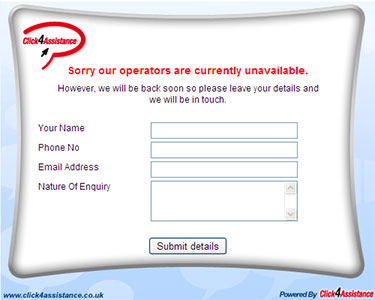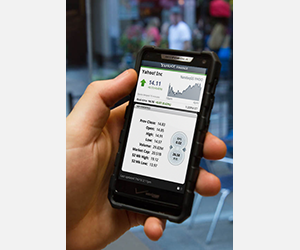Adding Live Chat - Forgotten Lessons from the High Street – Online Vs Offline (Part 2)

In part 1 of this blog we pointed out the importance of remembering your offline roots when optimising your online business. More specifically, we talked about the importance of first impressions, misdirecting potential customers, offering a warm welcome and creating a buzz to drive traffic. We continue with Part 2 which looks at what to do with your prospective customers once they’re in your store (on your website). We also give you practical advice when adding your live chat software.
Inside the Store
Customer Service Overkill
Congratulations! You’ve made it past the first hurdle, visitors are ambling through your digital aisles and ruminating on your selection. So why are you pushing them for more?
Too many stores continue to hassle successfully enticed customers. When I’ve only just set foot in a store there is nothing worse than an overzealous assistant asking if I need help finding anything. In fact, they’re in danger of reminding me that I don’t actually know why I came in.
Ease off. Give your customers some breathing space and let your website’s text and videos do their subtle work. For now, just be satisfied with the fact they’ve chosen to frequent your store. The exact same logic should be applied your website. Immediate pop-ups, autosound and slow load times due to multimedia content overload are sure-fire bounce rate boosters.
The high street has taught UK companies not to be pushy; the same rule applies online. Don’t scare your visitors back out the store. Study visitor behaviour and intervene at an appropriate time when they’re looking lost or confused. Live chat software can be configured to only push a chat invitation to visitors once they’ve remained on a page for a set amount of time. Consider using this to target uncertain visitors.
Product Presentation & Restock
High street stores ensure that they have enough staff on hand to answer customer questions, keep the floor tidy and shelves stocked up. For some reason, websites rarely receive the same amount of care and attention. It only takes one or two dedicated CMS users to update a website with the company’s latest announcements, products and news (a worthwhile investment to become a cutting edge company).
If the CMS is part of your stock control system, then website design is the equivalent of store layout. Follow the same principles as you would in a traditional store by giving your most popular products maximum visibility. Place associated discounts and promotions on other places of the website and on partner sites to keep bringing visitors back to your biggest seller. To encourage visitors to spend more time browsing your products, make sure your website design is user-friendly and filled with plenty of engaging content. Even if you do all you can, make sure you add live chat software to answer any questions your visitors might have about your products or services.
Beyond the Store
Hopefully your visitor is a customer by the time they leave your store, but this is where websites differ from traditional walk-in buyers. The ease and convenience of online shopping has evolved a new generation of savvy customers that will hunt around cyberspace for the best possible deal. If possible, offer a price-match promise.
To stay competitive in this environment it’s important to perform smart marketing. Every time you hit a conversion, try to find out why visitors chose that particular product or service. If they didn’t convert but came close, contact them or assess their behaviour to understand why. Lastly, give your visitors a reason to come back. Most retailers offer a loyalty scheme, money-back or prize draw incentive.
If something goes wrong, which it invariably will, don’t make your customers stand in a line at a separate checkout to be met with stern questions, fake concern and a negative attitude. Many organisations try to use the digital barrier as a means of avoiding their duty to the customer, but this is the wrong attitude. Every company should enforce a policy that aims to answer customer e-mails and call-back requests within three working days.
Conclusion
To be a successful internet entrepreneur you need to strike a balance between modern means and traditional values. Consumers continue to expect the same level of customer service they receive in the high street because e-commerce has yet to evolve its own set of rules – capitalise on the willingness of your website visitors to communicate by providing impactful and personalised customer support through adding live chat software.
As a rule of thumb, the internet and the high street should not be viewed as stand-alone competitors. Even if your business focuses on the digital, it’s important to adopt a holistic approach. But every brand is different, requiring different routes to market to appeal to a different audience. Businesses need to consider their unique position and consider the merits and financial implications of both the high street and online space while paying special attention to the year-on-year growth in online spending.
























